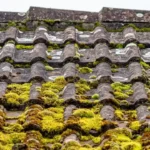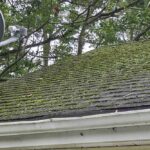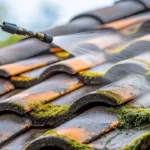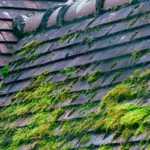For homeowners, maintaining a clean and moss-free roof is crucial. Roof moss removal tools are essential in ensuring your roof remains in top condition. Moss not only affects the aesthetics of your home but can also lead to significant damage if not addressed. In this article, we will explore the various tools available for moss removal and how to use them effectively.

Understanding Roof Moss
Moss thrives in damp and shaded areas, making roofs an ideal environment for growth. The presence of moss can lead to the degradation of roofing materials, resulting in leaks and other complications. To prevent these issues, it’s vital to address moss growth promptly.
Why Use Tools for Moss Removal?
Using the right roof moss removal tools ensures that the process is efficient and safe. These tools help in effectively removing moss without causing damage to your roof. Moreover, they can save you time and effort compared to manual removal methods.
Types of Roof Moss Removal Tools
1. Roof Brushes
Roof brushes are designed with bristles that help in scrubbing off moss without damaging shingles. They are ideal for small-scale moss removal tasks.
2. Pressure Washers
Pressure washers are powerful tools that can effectively remove moss from large areas. However, they must be used carefully to avoid damaging roofing materials. For more on how to use pressure washers, visit IKO’s guide on removing moss from shingles.
3. Moss Removal Sprays
These sprays are chemical solutions designed to kill and remove moss. They are easy to apply and can cover large areas quickly.
Steps for Safe Moss Removal
To ensure safety while using roof moss removal tools, follow these steps:
1. Safety First
Equip yourself with safety gear such as gloves, goggles, and non-slip shoes. Ensure your ladder is stable before climbing onto the roof.
2. Choose the Right Tool
Select the appropriate tool based on the extent of moss growth and roof type. For instance, a roof brush is ideal for delicate shingles, while a pressure washer is suitable for hard surfaces.
3. Follow Instructions
Always read the instructions provided with each tool. This ensures you use them correctly and avoid potential damage.
Preventing Moss Growth
After removing moss, take preventive measures to keep your roof moss-free. Regular roof inspections and maintenance can help in early detection and prevention of moss growth. Consider using eco-friendly solutions to prevent regrowth.
DIY vs. Professional Roof Cleaning
While DIY moss removal can be cost-effective, there are situations where hiring professionals is advisable. If the moss growth is extensive or if you’re unsure about using certain tools, seeking professional help can prevent damage and ensure thorough cleaning.
For more tips on DIY moss treatment, visit DIY roof moss treatment.
Choosing the Right Tools
When selecting roof moss removal tools, consider factors such as the size of your roof, type of shingles, and extent of moss growth. Investing in high-quality tools ensures better results and longevity.
1. Cost-Effectiveness
Evaluate the cost of tools versus hiring professionals. In some cases, purchasing tools for repeated use can be more economical.
2. Efficiency
Choose tools that offer efficiency and ease of use. This saves time and reduces the physical effort required for moss removal.
Maintenance After Removal
Post-removal, ensure regular maintenance to keep your roof in good condition. This includes clearing debris, checking for damage, and ensuring proper drainage.
For more on roof maintenance, explore roof moss and leaks.

Frequently Asked Questions
1. Can moss damage my roof?
Yes, moss can retain moisture, leading to the deterioration of roofing materials over time.
2. How often should I remove moss from my roof?
Regular inspections every six months can help in early detection and removal of moss.
3. Are chemical sprays safe for all roof types?
While most sprays are designed for various roofing materials, it’s essential to read the label and ensure compatibility with your specific roof type.
This article contains affiliate links. We may earn a commission at no extra cost to you.








